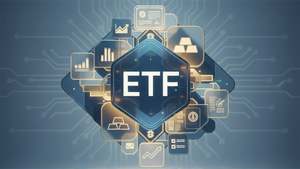The Aha Moment: 4 strategies for investors focused on ‘going green’

When people talk about sustainable investing, one of the first things that comes to mind is “going green.” There’s a good reason that the ESG label used by funds and ETFs puts the E first – E stands for environmental, and environmental concerns have been a huge driver of investor interest in sustainable investing approaches.
But a lot of people, including professionals, are pretty blurry on what a “green investment” consists of. Here’s just one example – in a recent Bloomberg interview, investment icon Jeremy Grantham said that investors should pivot away from artificial intelligence and toward stocks that “green the economy.” But he was woefully short on specifics about what those investments might be, or how to approach them.
Here’s the Aha Moment: There is no such thing as a “green” investment. Instead, there are a lot of ideas – some might call them innovations – about aligning one’s investments with environmental considerations. Here are four of those ideas, drawn from the Equities.com Impact Funds list.
Option #1: Steer clear of traditional energy
The oldest and simplest approach to green investing is divestiture – that is, simply avoiding the companies that are doing the most to contribute to environmental challenges. For most investors, that means steering clear of traditional oil and gas companies.
There are numerous ESG funds that divest from the oil and gas industry, or even the entire energy sector. Most of these are broadly diversified funds that are meant for the core of your portfolio. A good example is Green Century Equity Fund (GCEQX) – it’s a broad fund that excludes coal, oil and gas companies, and even companies with high carbon reserves. It’s a good fit for the investor that just doesn’t want to put their money into energy stocks.
Avoiding traditional energy has pluses and minuses. Steering clear of an entire economic segment will impact the performance and risk of your investment, sometimes for the better and sometimes not. Perhaps more importantly, you might miss the chance to invest in pioneering companies or new technologies in the sector that are solving environmental problems in a profitable way.
Option #2: Invest in solutions
If you want to be more solutions-oriented, there are numerous funds and ETFs that give you the chance to reward the good actors (or at least, what they define as good actors). These are companies that are creating, investing in, or adopting energy efficiency solutions and using their size and influence to push other companies to adopt them too.
One example is Fidelity Environment and Alternative Energy Fund (FSLEX). FSLEX has a small percentage of assets held in the energy sector, but the majority of its holdings are in technology, industrial, and consumer firms that are implementing a range of solutions to energy problems.
One thing to note – their ideas about who has good solutions may not be the same as yours. FSLEX’s top two holdings as of Jan. 31 were Microsoft and Tesla. Is there an argument that both companies are driving energy solutions? Sure, but you’ll have to consider whether their solutions are the ones you want to invest in.
Include a callout: “There are numerous funds and ETFs that give you the chance to reward the good actors (or at least, what they define as good actors).”
Option #3: Make a bet on innovation
The best of all worlds is to put your money behind energy innovation – companies that are developing energy alternatives and making money doing so. It’s not easy to invest directly in firms such as these. Most are small, or available only to private equity investors, so your average large-scale, broad-based mutual fund can’t invest much in them.
But if you’re willing to take on risk, you can invest in specialty mutual funds that are directly exposed to alternative energy industries. A good example is the Invesco Solar ETF (TAN). TAN TAN invests in an index that includes firms focusing on solar technologies, solar components, solar-based utilities, and other supportive industries.
A high risk tolerance is necessary, because these funds or ETFs are not well diversified, and the fortunes of the solar industry – really any single industry – swing widely. Last year, both TAN and its index were down more than 36%. But the fund had exceptional results in 2019 and 2020.
Option #4: Go where the hot money is
When Grantham talked about “greening the economy” maybe he wasn’t talking about energy efficiency at all, but instead about the trends that he expects will drive the markets. After all, energy demand is only expected to go up, and meeting that demand will be very profitable.
For example, the proliferation of AI technologies is highly energy intensive, and over time their energy requirements could outstrip what current energy technologies can provide. For that reason, some AI leaders have been advocating a return to nuclear power. If you want to hop on the trend, a good option to do so is the VanEck Uranium and Nuclear ETF (NLR). NLR NLR has been around since 2007 and has a relatively good performance profile.
As noted, any specialty fund that invests mainly in one industry is likely to have a very high risk profile. But NLR (like other nuclear-oriented strategies) is a very pure play on what could be a very hot investing trend.
Mindful Choices
Sustainable investing is all about suitability – finding the strategies that are the right fit for what you seek. Frustratingly, you can’t always count on investment professionals to be clear about what your options are. But when it comes to “green” investments, most options fit into one of these categories, and it only take a few questions to figure out what options will work best for you.
More of the Aha Moment: A JUST idea of sustainability
More News
View More




Recent Quotes
View MoreQuotes delayed at least 20 minutes.
By accessing this page, you agree to the Privacy Policy and Terms Of Service.